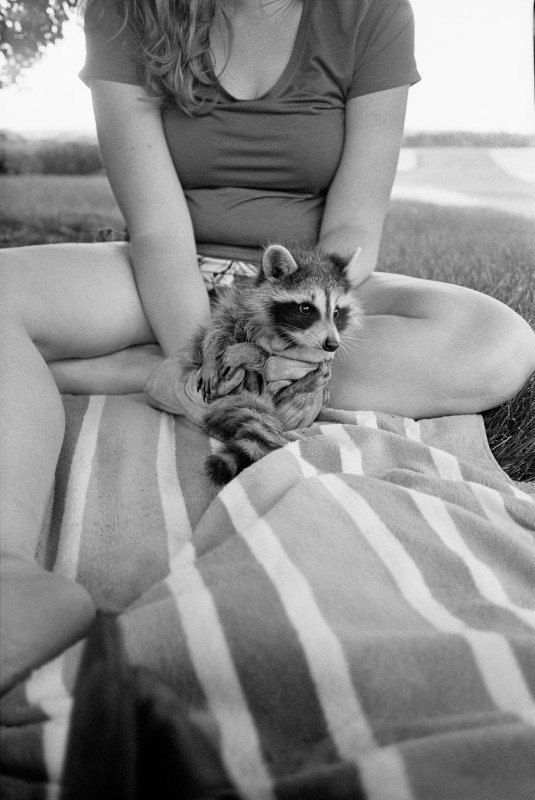The Seraphim
The Seraphim
Jesse Lenz
May 30, 2024

Lenz philosophises about how the greatest mysteries of life might be seen through the prism of little people, and muses on what The Seraphim, the second instalment of the seven-part series, is all about:
LFI: The Seraphim is the second volume in your The Seven Seals heptalogy. What is it about in contrast to your first monograph, The Locusts (2020)?
Jesse Lenz: I would say it's a continuation. I think of this series as an episodic. It’s all searching for grace and healing within the brokenness and imperfection of life. About mapping a way back to a realm of childhood enchantment. Seven years ago, when I started this work, I wanted to honor the lives of my children by embedding myself in their world: a microcosmic world of insects, plants, and wild animals. Observing these sets of fledgling counterparts as nature insists upon them.
What was your intention with The Seraphim?
To create a visual record of how the dichotomy of nature and grace shape the lives of all living things. To photograph the abiding, recurring cycles and rhythms of nature, and the lives that are inextricable from it. This on-going project is documentary by nature: photographing my six children, their daily lives, and our land in rural Ohio; but it aims to be more numinous than the word ‘documentary’ implies.
In The Seraphim you witness nature and grace through the prism of children's eyes. Tell us more about this.
All of my work is an extension of my life and what I am trying to give my time and attention to. I believe the natural world is the antidote to the disenchantment of modernity. However, the season to nurture a sense of wonder in a child is very short, and the seeds must be planted early or else they will not germinate when the pressure and anxiety of life intensify. I'm interested in the role of spirituality in human life, and the ways in which the spiritual realm interacts with our own. With a camera, trying to capture a sense of the sublime that is both personal and universal.
What does its title The Seraphim refer to?
In Abrahamic religions, the seraphim are the highest order of angels. They are six-winged beasts whose bodies are covered in eyes. In stories, any time an angel revealed itself to a human it had to say, "do not be afraid". They are beautiful and terrifying creatures. During those long meditative hikes, I came to think of owls as a real manifestation of the angels and demons I grew up with as a child. Beautiful and terrible creatures that are invisible to humans unless they reveal themselves to you, or unless you have eyes to see. I find it very enchanting knowing that these beasts are real, and they live in my woods. It is also said that Satan was a seraphim before he was cast to earth. It’s a reminder of the duality of things.
How did you develop the idea of creating a heptalogy?
The idea for the heptaglogy wasn't fully formed when I published The Locusts, but I knew I would continue this work as long as I had children and grandchildren around. The 7th book will be released as my youngest children (twins) are going to college, so it will be a good bookend to the series. This project proceeds at the pace of the natural world and a child’s life. It requires presence and persistence. The photographs reveal themselves to you through patient observation. Work of this kind, I believe, carries with it its own primal way of communicating.
Jesse Lenz+-
Born in Montana, USA, in 1988, the photographer is an autodidact and, in addition to being a photographer, a multi-disciplinary artist. He is the author of The Locusts (Charcoal Press, 2020) and founding director of the Charcoal Book Club and the Chico Review, a platform for the exploration of photography. As an illustrator, he has produced many images for publications such as TIME, The New York Times Magazine, Newsweek, Rolling Stone and many more. Furthermore, from 2011 to 2018 he was co-founder and publisher of The Collective Quarterly and The Coyote Journal. He lives with his family on a farm in rural Ohio. More








